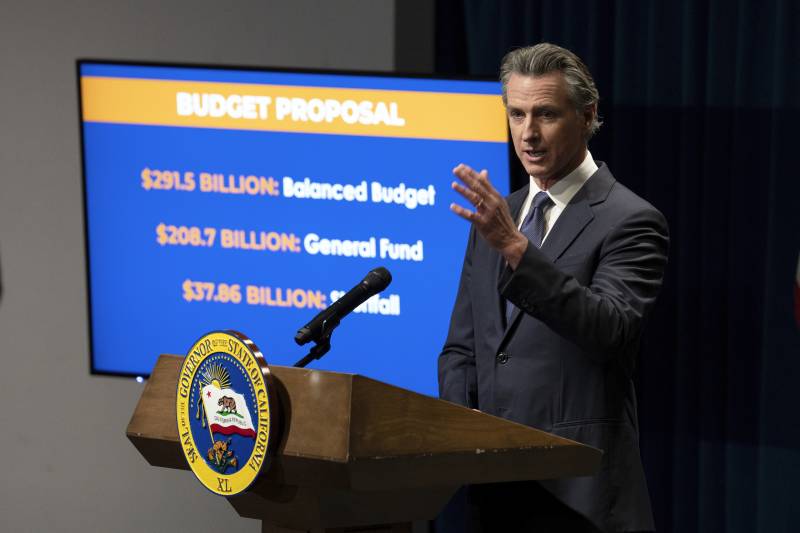“Now, because of more than a decade of responsible budgeting, we’re better prepared to protect the path of progress we’ve made,” Atkins said in a statement.
Some Republicans called for Newsom to enact further cuts before tapping state reserves.
“Years of out-of-control spending by the governor and the legislative Democrats have added billions of dollars of new ongoing costs,” said Assemblymember Vince Fong (R-Bakersfield) the vice chair of the Assembly Budget Committee. “Until the governor takes control of the unsustainable spending, it is premature to tap the rainy day fund.”
Throughout his press conference, Newsom bristled at calls for new taxes, suggesting that even discussing ideas such as a “wealth tax” plan damage the state’s reputation.
That proposal, which would tax the net worth of high-income residents, is expected to receive an initial hearing in the Legislature on Wednesday afternoon.
“There’s no wealth tax, there’s no income tax,” Newsom said.
The cuts in Newsom’s budget are centered on reductions on climate programs, with investments dropping from $54 billion to $48.3 billion, by trimming investments in biking and walking projects, along with fire prevention programs such as home hardening and prescribed fires.
Water and energy are the largest climate reductions of more than a billion dollars. At the same time, there are nearly $160 million in new investments for flood protection, levee repair and the restoration of the Salton Sea.
Some environmental groups said they are glad the cuts aren’t deep into the climate sector.
“But, the climate crisis and the corporations who are causing it will not pause while we wait for another budget surplus — and neither can we,” said David Weiskopf, senior policy advisor with NextGen California.
Newsom said the Biden administration’s investments in transportation and climate projects through the Bipartisan Infrastructure Act and the Inflation Reduction Act “helped supplement some of the modest cuts we’re making in this space.”
But Laura Deehan, state director at Environment California, said she was disappointed in the cuts to clean car and rooftop solar incentives.
“Clean energy and climate programs are investments we make for our kids and grandkids,” Deehan said in a statement. “If we cut now, they pay more later in health and in their environment as well as money.”
Newsom’s budget proposal also pauses funding to implement all newly signed laws — including the Climate Accountability Package made up of two laws that would require large corporations to publicly disclose their greenhouse gas emissions, carbon embedded in supply chains and climate risks — until the state’s finances are clear in May.
“It’s critical that the May budget include funding to implement these laws so that businesses have the certainty they need to prepare to make these new disclosures,” Sen. Scott Wiener (D-San Francisco) said.
Elsewhere in the budget, Newsom proposed $1.2 billion in cuts to housing programs supporting rental housing development, infill development and homeownership, along with a modest drop in per-pupil spending and deferred some funding for higher education and capital transit projects.
